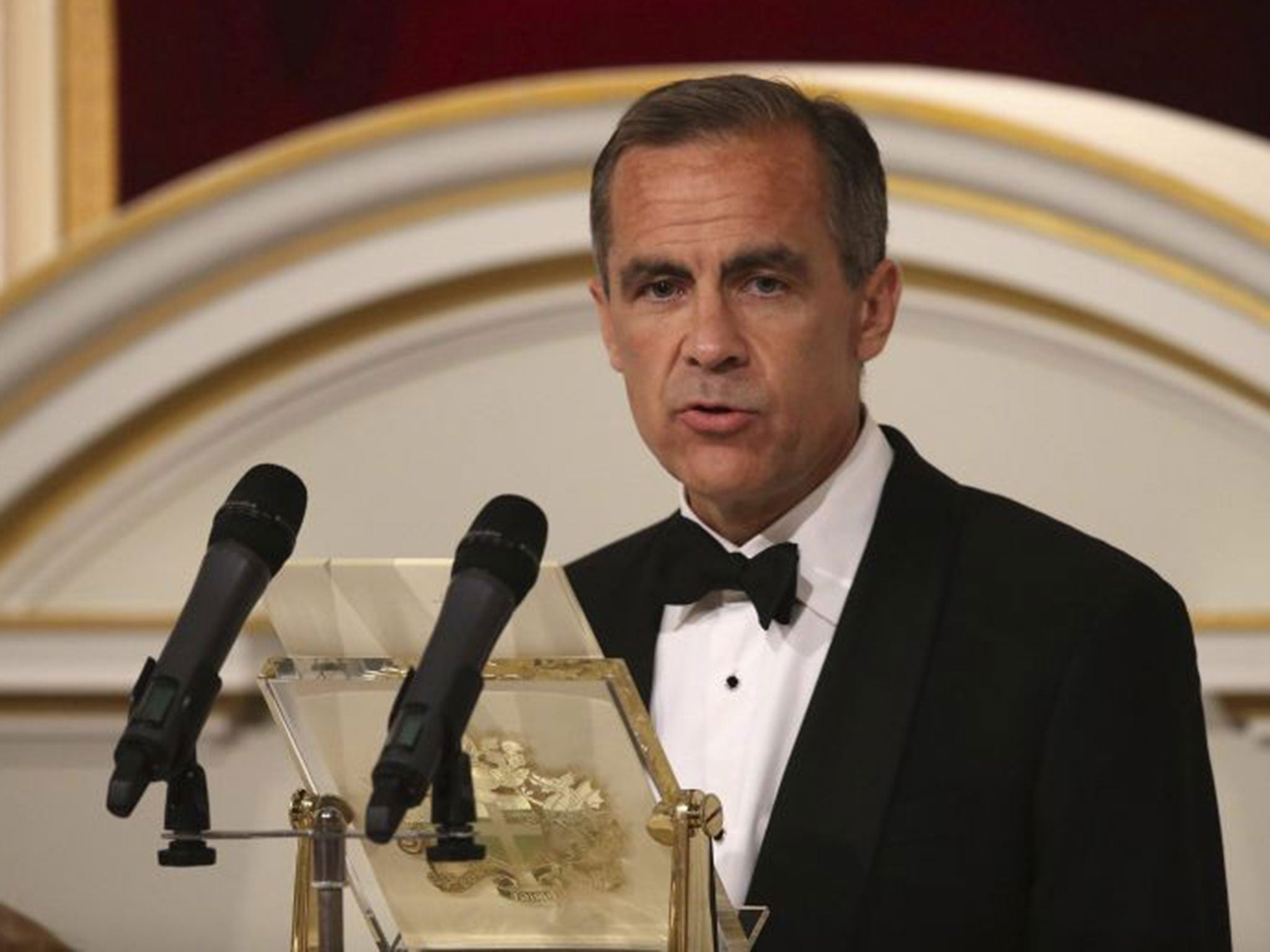Markets bet on rate rise this year after hawkish Carney intervention
The UK’s biggest builders — Persimmon, Taylor Wimpey and Barratt Developments — plunged 5% while Bovis Homes and Bellway sank 4%

Traders are now pricing in a rise in rates from the Bank of England before the end of the year, as financial markets were sent scrambling yesterday by Mark Carney’s unexpected shift on the timing of monetary tightening.
The Governor’s comments at the Mansion House this week – where he disclosed that the first rate rise could occur “sooner than markets currently expect” – mean the consensus now is that the initial rise will take place in the next six months, rather than in the first quarter of 2015.
The market interest rate curve now shows rates nearing 1.75 per cent by the end of next year. That would add roughly £140 to the monthly bill of someone with a £200,000 rate-tracker mortgage.
The Governor’s words, which suggest the Bank of England could lead the rest of the advanced world in the monetary tightening cycle, also sent sterling close to five-year highs against the dollar, with the pound touching $1.69 at one point in trading.
The euro dipped to its weakest level against the pound since 2012. There was also upward pressure on British 10‑year gilt yields, which drifted up to 2.79 per cent.
The Governor’s comments came as a shock to the markets because he had previously been perceived as relatively dovish on rates and inclined to keep them on hold at 0.5 per cent for longer than some of his more hawkish colleagues on the Bank’s rate-setting Monetary Policy Committee.
The Bank said earlier this year that it would hold rates until more slack in the labour market had been absorbed. But official data released this week showed that unemployment fell again in the three months to April, declining at a rate of 6.6 per cent, although real wages dropped again.
The Office for National Statistics reported yesterday that construction output grew by 1.2 per cent in April. It also doubled its estimate for the sector’s expansion between January and March, meaning that the estimate for GDP growth in the first quarter could ultimately be lifted from 0.8 per cent to 0.9 per cent.
Michael Saunders of Citigroup said Mr Carney’s change in tone could reflect a calculation on his part that by moving more quickly towards the first rate hike, the MPC will be able to ensure subsequent rises are more gradual. “The alternative policy of waiting until average earnings growth picks up significantly would probably then require rates to rise even faster or further,” he noted.
Economists were divided yesterday on how damaging earlier rate rises could be. “Assuming that an earlier rise would still be followed by a gradual tightening of policy, then the impact on the economy would be minimal,” said Andrew Goodwin of Oxford Economics. But Matthew Whittaker of the Resolution Foundation warned that the number of mortgage borrowers in financial difficulties could double to 2.3 million if rates rose rapidly to 3 per cent over the coming years.
“Mortgage debt… is still substantial, even after years of economic downturn, and it could start to look precarious for many households over the coming years,” he said.
“The Bank will have to think carefully about the impact on the large number of mortgagors who are already devoting a large chunk of their income to repayments and those who would have to do so after even modest rate rises”.
Subscribe to Independent Premium to bookmark this article
Want to bookmark your favourite articles and stories to read or reference later? Start your Independent Premium subscription today.

Join our commenting forum
Join thought-provoking conversations, follow other Independent readers and see their replies